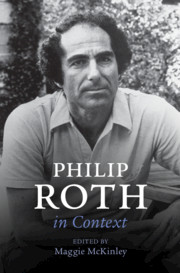Book contents
- Philip Roth in Context
- Philip Roth in Context
- Copyright page
- Contents
- Notes on Contributors
- A Note on References and Abbreviations
- Introduction
- Part I Life and Literary Contexts
- Part II Critical Contexts
- Part III Geographical Contexts
- Part IV Theoretical Contexts
- Part V Jewish American Identity
- Part VI Gender and Sexuality
- Part VII Political Contexts
- Chapter 28 Political Satire
- Chapter 29 Class Politics
- Chapter 30 American Individualism
- Chapter 31 The War on Terror
- Part VIII Roth’s Legacy
- Primary Bibliography
- Selected Secondary Bibliography
- Index
Chapter 29 - Class Politics
from Part VII - Political Contexts
Published online by Cambridge University Press: 15 July 2021
- Philip Roth in Context
- Philip Roth in Context
- Copyright page
- Contents
- Notes on Contributors
- A Note on References and Abbreviations
- Introduction
- Part I Life and Literary Contexts
- Part II Critical Contexts
- Part III Geographical Contexts
- Part IV Theoretical Contexts
- Part V Jewish American Identity
- Part VI Gender and Sexuality
- Part VII Political Contexts
- Chapter 28 Political Satire
- Chapter 29 Class Politics
- Chapter 30 American Individualism
- Chapter 31 The War on Terror
- Part VIII Roth’s Legacy
- Primary Bibliography
- Selected Secondary Bibliography
- Index
Summary
To understand the conflicts in many of Roth’s novels, it is important to situate his narratives within the context of class conflict, in particular. Class identity – particularly, Jewish middle-class identity – is an influential factor in the development of Roth’s protagonists. As Ruth Wisse points out in her article “Philip Roth Then and Now,” “Roth’s fictional interpretation of American Jews as a regnant bourgeoisie disturbed as much as it amused,” as it addressed an anxiety about materialism and upper class assimilation, particularly in works like Goodbye, Columbus. Moreover, the striving of a character like the Swede in American Pastoral and the identity of Faunia Farley in The Human Stain can be further understood when considered in light of American class structure the assumptions and promises proffered by American liberalism.
- Type
- Chapter
- Information
- Philip Roth in Context , pp. 311 - 322Publisher: Cambridge University PressPrint publication year: 2021

